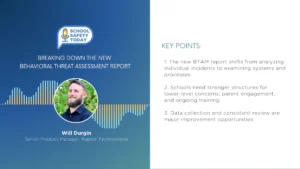Why Universities Are Partnering With Employers on Credential Programs
Since the start of the pandemic, employers started partnering with universities to provide credentialing programs on a large scale. Credly found that companies building their curriculums and providing credentials are up 83 percent. IBM, Google, and HubSpot are just a few of the giants that have jumped on the trend.
Why are universities just starting to do this, and what will it look like down the road?
Voice of B2B, Daniel Litwin, talked with Brandon Busteed, Chief Partnership Officer of Kaplan on Marketscale TV about these programs and the future of decentralized educational programs.
The duo talked about why large institutions are teaming with universities. One of those reasons is that employers are worried graduating students won’t be trained for the job force. The goal is to help bridge this gap.
“There aren’t enough people trained for the utilization of the kinds of software, solutions or other things they need them trained for,” Busteed said. He used the example of these companies with cloud computing and not enough graduates trained to use this software. The partnership between universities and employers is essential when it comes to this training, according to Busteed. Companies realize they don’t have the tools to provide extensive education and training programs.
In addition to the pandemic, the U.S. also faced a year of civil strife. With these things on a company’s radar, they are looking to improve their diversity pool, both now and in the future.
“They’re all desperately trying to improve their diversity talent pipeline, as well,” Busteed said.
Follow us on social media for the latest updates in B2B!
Twitter – @MarketScale
Facebook – facebook.com/marketscale
LinkedIn – linkedin.com/company/marketscale








